About the blog
This is an archive of the blog “Ethics in Graphic Design” which was active from 2010 through 2022. You can download a PDF version of the field guide here. All content was created by Eileen MacAvery Kane and is free to share under Creative Commons CC BY-SA 4.0.
Exploring Empathy in the Metaverse
 As we emerge from the COVID-19 pandemic and are able to look back and reflect, we have found that after the initial sense of camaraderie and despite soundbites of "We're all in this Together," many experienced a profound sense of isolation and fear. Along with this came a decline in empathy and the ability to share and understand others feelings.At the same time, the demand for Augmented Reality and Virtual Reality has catapulted. Meeting virtually, working virtually, and presenting virtually have all become commonplace in the workplace. Retail, education, and entertainment all saw a huge rise in using these technologies during the pandemic.Keiken, a fem-collective of artists based in London and Berlin, recently launched its first solo show that includes an interactive CGI film series, The Life Game, and Bet(a) Bodies, a wearable technology that simulates the physical experience of being pregnant. They feel strongly that empathy is an essential component of the human experience.“It’s important to remember with mind and body that you can’t have one without the other,” they assert. “The relationship between the digital and the physical can’t sustain itself in the Metaverse if we ignore the body, or our organic matter. If the physical body can be supported and stimulated while we’re in the Metaverse, rather than just dislocated, we have the potential to emancipate ourselves from the physical limitations of our actual bodies.”Keiken's approach is in contrast to many gaming manufacturers where emotions are not central to the design. Their work echos Damasio principles regarding the connectivity of our emotions to motivation and creativity, and our ability to invent and create work that will benefit our culture and help us grow.Sources:https://www.designindaba.com/articles/creative-work/metaverse-multipleshttps://www.rewire.org/pandemic-empathy-deficit/https://www.forbes.com/sites/forbestechcouncil/2021/09/14/augmented-and-virtual-reality-after-covid-19/?sh=6037f30f2d97https://findingmastery.net/antonio-damasio/
As we emerge from the COVID-19 pandemic and are able to look back and reflect, we have found that after the initial sense of camaraderie and despite soundbites of "We're all in this Together," many experienced a profound sense of isolation and fear. Along with this came a decline in empathy and the ability to share and understand others feelings.At the same time, the demand for Augmented Reality and Virtual Reality has catapulted. Meeting virtually, working virtually, and presenting virtually have all become commonplace in the workplace. Retail, education, and entertainment all saw a huge rise in using these technologies during the pandemic.Keiken, a fem-collective of artists based in London and Berlin, recently launched its first solo show that includes an interactive CGI film series, The Life Game, and Bet(a) Bodies, a wearable technology that simulates the physical experience of being pregnant. They feel strongly that empathy is an essential component of the human experience.“It’s important to remember with mind and body that you can’t have one without the other,” they assert. “The relationship between the digital and the physical can’t sustain itself in the Metaverse if we ignore the body, or our organic matter. If the physical body can be supported and stimulated while we’re in the Metaverse, rather than just dislocated, we have the potential to emancipate ourselves from the physical limitations of our actual bodies.”Keiken's approach is in contrast to many gaming manufacturers where emotions are not central to the design. Their work echos Damasio principles regarding the connectivity of our emotions to motivation and creativity, and our ability to invent and create work that will benefit our culture and help us grow.Sources:https://www.designindaba.com/articles/creative-work/metaverse-multipleshttps://www.rewire.org/pandemic-empathy-deficit/https://www.forbes.com/sites/forbestechcouncil/2021/09/14/augmented-and-virtual-reality-after-covid-19/?sh=6037f30f2d97https://findingmastery.net/antonio-damasio/
Color theory: pure science or cultural constructs?
https://youtu.be/YsYZcF_VQDkColor theory is taught theoretically as one of the formal design elements used in art and design. The color wheel and other universal principles have their roots in the color science of Isaac Newton.However, notions and ideals about color have long been associated with and utilized by colonists and spiritualists. They are rarely based purely in science.In a recent article, Colored Bodies: Cultural Constructs in Standard Color Theory Pedagogy, author Aaron Fine, Professor of Art at Truman State University, discusses his research into some of the most problematic aspects of standard color theory education. Fine talks about Johann Joachim Winckelmann, founder of art history, and his blatant racist statement that "a beautiful body will, accordingly, be the more beautiful the whiter it is."Fine provides more powerful examples and also offers option for educators in their pedagogy. Why not teach about the cultural constructs involved in creating color theory and how powerful they are in addition to the science involved?https://designincubation.com/publications/abstracts/colored-bodies-cultural-constructs-in-standard-color-theory-pedagogy/
Celebrate Public Domain Day!
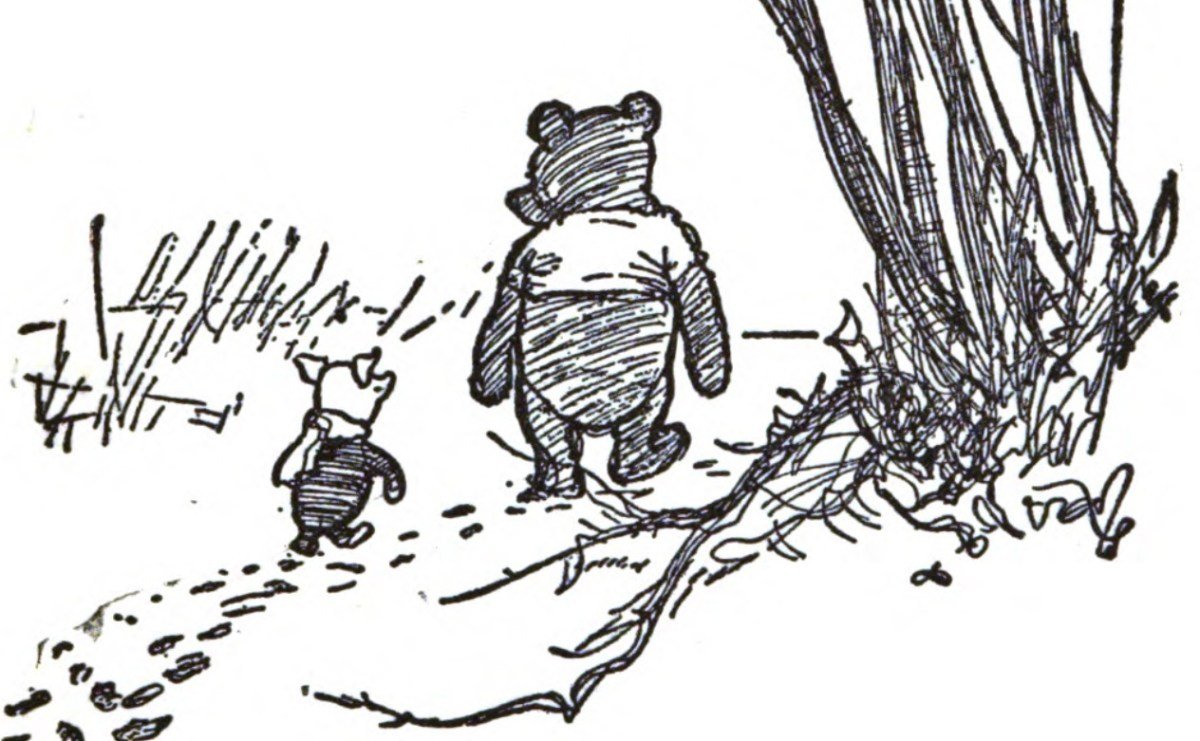 Copyright law is at best, quite complicated. Educating students about these complexities can be quite challenging. When asked if they can use "something," the answer is almost always, "it depends." Discussions about Creative Commons licensing, fair use, and plagiarism and appropriation abound. With public domain material, it's a pleasure to be able to just say "YES!"On the other hand, the journey of how works become part of the public domain collection is not always simple. Before 1998, in the United States, works 75 years or older graduated into the public domain. In 1998, President Clinton extended that term by 20 years, effectively cancelling Public Domain Day for 20 years.This year we can celebrate the release of music, film, literature, and other works of art from 1926—including Winnie-the-Pooh. Finding work in the public domain can also be a bit complicated. Multiple sources exist. Wikipedia Commons, Europeana, Library of Congress, and many museums are among them. A good place to get started is The Public Domain Review.Enjoy the journey!Source:https://hyperallergic.com/703299/celebrate-public-domain-day-2022/
Copyright law is at best, quite complicated. Educating students about these complexities can be quite challenging. When asked if they can use "something," the answer is almost always, "it depends." Discussions about Creative Commons licensing, fair use, and plagiarism and appropriation abound. With public domain material, it's a pleasure to be able to just say "YES!"On the other hand, the journey of how works become part of the public domain collection is not always simple. Before 1998, in the United States, works 75 years or older graduated into the public domain. In 1998, President Clinton extended that term by 20 years, effectively cancelling Public Domain Day for 20 years.This year we can celebrate the release of music, film, literature, and other works of art from 1926—including Winnie-the-Pooh. Finding work in the public domain can also be a bit complicated. Multiple sources exist. Wikipedia Commons, Europeana, Library of Congress, and many museums are among them. A good place to get started is The Public Domain Review.Enjoy the journey!Source:https://hyperallergic.com/703299/celebrate-public-domain-day-2022/
The Social Media Conundrum
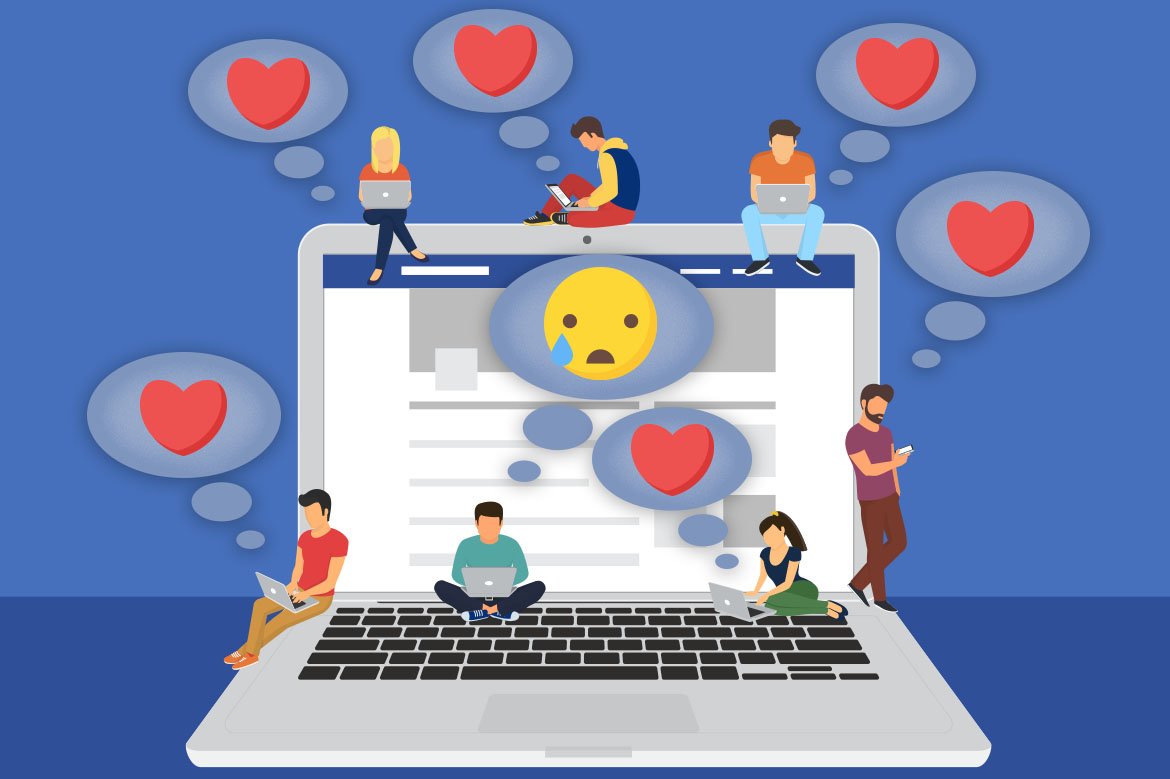 Lush Cosmetics made headlines last month when they decided to quit social media to raise awareness about the damaging effects to people's mental health that it has been shown to have. "I've spent all my life avoiding putting harmful ingredients in my products. There is now overwhelming evidence we are being put at risk when using social media. I'm not willing to expose my customers to this harm, so it's time to take it out of the mix," Lush co-founder and CEO Mark Constantine OBE stated.You don't have dig very deep to find a plethora of articles about the damage social media has on mental health. From the addictive qualities that make social media akin to playing the slots—to the disappointment and depression caused by FOMO (fear of missing out)—to the fake filters that present a misleading picture of who we really are—social media wreaks havoc with our lives.You also don't have to dig very deep to find "Social Media Designer" as a job title or in the list of essential skills that a graphic designer should have when applying for a job. Graphic designers have always found work where consumers interact with content. With 4.48 billion people using social media worldwide, there is no doubt they need skills in this area. All kinds of classes and bootcamps are available to get certified in social media marketing and they can add this skillset to their resume and portfolio.Recently, a bi-partisan probe has launched a probe into Meta Platforms (formerly known as Facebook) to look into the harmful effects Instagram has on kids and the techniques used to increase the frequency and duration of engagement by young users and the harm caused as a result. New York Attorney General Letitia James has joined the coalition and has said the company continues to put profits over safety and we need to protect our children and young adults. A Meta spokesperson claims they are continuing to add features to deal with the negative issues caused by their platforms including prompts to "Take a Break" and ways to nudge them toward other types of content. It's yet another conundrum; how can they possibly protect their users while at the same time profiting from them?The question is huge, how does a graphic designer work ethically and responsibly within the minefield of social media marketing? All and any ideas are welcome.https://thehill-com.cdn.ampproject.org/c/s/thehill.com/changing-america/enrichment/arts-culture/582898-lush-cosmetics-quitting-social-media-to-bring?amp&fbclid=IwAR31-FU0Nzg4Upke0mPcq_lVZKJF_Sxny5CJ9mJju066NAs-Wgt5eV0xdVMhttps://www.foxbusiness.com/lifestyle/lush-cosmetics-quitting-social-mediahttps://www.foxbusiness.com/politics/instagram-investigated-coalition-of-states-effects-kidshttps://lancastergeneralhealth.org/health-hub-home/2021/september/the-effects-of-social-media-on-mental-healthhttps://www.mcleanhospital.org/essential/it-or-not-social-medias-affecting-your-mental-healthhttps://www.statista.com/topics/1538/social-media-marketing/#dossierKeyfigureshttps://backlinko.com/social-media-users#social-media-usage-statshttps://khn.org/news/social-media-is-harming-the-minds-of-our-youth-right-maybe-not/
Lush Cosmetics made headlines last month when they decided to quit social media to raise awareness about the damaging effects to people's mental health that it has been shown to have. "I've spent all my life avoiding putting harmful ingredients in my products. There is now overwhelming evidence we are being put at risk when using social media. I'm not willing to expose my customers to this harm, so it's time to take it out of the mix," Lush co-founder and CEO Mark Constantine OBE stated.You don't have dig very deep to find a plethora of articles about the damage social media has on mental health. From the addictive qualities that make social media akin to playing the slots—to the disappointment and depression caused by FOMO (fear of missing out)—to the fake filters that present a misleading picture of who we really are—social media wreaks havoc with our lives.You also don't have to dig very deep to find "Social Media Designer" as a job title or in the list of essential skills that a graphic designer should have when applying for a job. Graphic designers have always found work where consumers interact with content. With 4.48 billion people using social media worldwide, there is no doubt they need skills in this area. All kinds of classes and bootcamps are available to get certified in social media marketing and they can add this skillset to their resume and portfolio.Recently, a bi-partisan probe has launched a probe into Meta Platforms (formerly known as Facebook) to look into the harmful effects Instagram has on kids and the techniques used to increase the frequency and duration of engagement by young users and the harm caused as a result. New York Attorney General Letitia James has joined the coalition and has said the company continues to put profits over safety and we need to protect our children and young adults. A Meta spokesperson claims they are continuing to add features to deal with the negative issues caused by their platforms including prompts to "Take a Break" and ways to nudge them toward other types of content. It's yet another conundrum; how can they possibly protect their users while at the same time profiting from them?The question is huge, how does a graphic designer work ethically and responsibly within the minefield of social media marketing? All and any ideas are welcome.https://thehill-com.cdn.ampproject.org/c/s/thehill.com/changing-america/enrichment/arts-culture/582898-lush-cosmetics-quitting-social-media-to-bring?amp&fbclid=IwAR31-FU0Nzg4Upke0mPcq_lVZKJF_Sxny5CJ9mJju066NAs-Wgt5eV0xdVMhttps://www.foxbusiness.com/lifestyle/lush-cosmetics-quitting-social-mediahttps://www.foxbusiness.com/politics/instagram-investigated-coalition-of-states-effects-kidshttps://lancastergeneralhealth.org/health-hub-home/2021/september/the-effects-of-social-media-on-mental-healthhttps://www.mcleanhospital.org/essential/it-or-not-social-medias-affecting-your-mental-healthhttps://www.statista.com/topics/1538/social-media-marketing/#dossierKeyfigureshttps://backlinko.com/social-media-users#social-media-usage-statshttps://khn.org/news/social-media-is-harming-the-minds-of-our-youth-right-maybe-not/
3-D Printing Homes: Mexico or Mars!
 It's amazing to think that 3D homes are being built for poverty stricken areas like Mexico, while the same technology is being used to build habitats for life on Mars. Two models that exist simultaneously, use the same technology, and have diametrically opposed outcomes: one to stay on the Earth and make it affordable and habitable, and the other to leave the earth and make another planet habitable, and it's highly doubtful that model will be affordable to most.NASA has been working with companies for several years on developing the technology to create sustainable homes for Mars. A recent article by Business Insider, reports that NASA is seeking volunteers to spend a year living in these homes pretending that they are on Mars.In San Francisco, the organization New Story is focused on providing housing solutions to those in extreme poverty. They claim they have built the world's first community of 3-D homes and have developed a micro-mortgage model to help finance them.One question that arises when considering the materials being used is whether or not these homes are sustainable and eco-friendly or are we adding to the waste stream on Earth and about to bring our bad habits to Mars? One article from a 3-D Building company, Build with Rise, states that by limiting construction waste and material transportation costs, 3-D printers drastically reduce the carbon footprint associated with building homes. If you companies use sustainable and renewable materials, the effect on the environment will be event better.Many feel the era of 3-D printing has arrived. As time goes on and printing methods are perfected, it will be interesting to see which model dominates. Will we use the technology to save our existing planet and populations, or use it to make an exit from our dying planet to somewhere new?Sources:https://www.nytimes.com/2021/09/28/business/3D-printing-homes.htmlhttps://www.businessinsider.com/nasa-mars-martian-habitat-icon-3d-printed-space-texas-2021-8https://www.iconbuild.com/updates/icon-3d-prints-the-first-simulated-mars-surface-habitat-for-nasahttps://thespaces.com/ai-space-factory-designs-homes-for-planet-mars/https://www.buildwithrise.com/stories/3d-printed-homes-sustainable-alternative
It's amazing to think that 3D homes are being built for poverty stricken areas like Mexico, while the same technology is being used to build habitats for life on Mars. Two models that exist simultaneously, use the same technology, and have diametrically opposed outcomes: one to stay on the Earth and make it affordable and habitable, and the other to leave the earth and make another planet habitable, and it's highly doubtful that model will be affordable to most.NASA has been working with companies for several years on developing the technology to create sustainable homes for Mars. A recent article by Business Insider, reports that NASA is seeking volunteers to spend a year living in these homes pretending that they are on Mars.In San Francisco, the organization New Story is focused on providing housing solutions to those in extreme poverty. They claim they have built the world's first community of 3-D homes and have developed a micro-mortgage model to help finance them.One question that arises when considering the materials being used is whether or not these homes are sustainable and eco-friendly or are we adding to the waste stream on Earth and about to bring our bad habits to Mars? One article from a 3-D Building company, Build with Rise, states that by limiting construction waste and material transportation costs, 3-D printers drastically reduce the carbon footprint associated with building homes. If you companies use sustainable and renewable materials, the effect on the environment will be event better.Many feel the era of 3-D printing has arrived. As time goes on and printing methods are perfected, it will be interesting to see which model dominates. Will we use the technology to save our existing planet and populations, or use it to make an exit from our dying planet to somewhere new?Sources:https://www.nytimes.com/2021/09/28/business/3D-printing-homes.htmlhttps://www.businessinsider.com/nasa-mars-martian-habitat-icon-3d-printed-space-texas-2021-8https://www.iconbuild.com/updates/icon-3d-prints-the-first-simulated-mars-surface-habitat-for-nasahttps://thespaces.com/ai-space-factory-designs-homes-for-planet-mars/https://www.buildwithrise.com/stories/3d-printed-homes-sustainable-alternative
Dangerously Cute: Using Brand Mascots as Political Propaganda
When the Amul Girl mascot was created in 1966 to represent an Indian brand of butter, she was immediately a hit with households across India. The branding was created to help the Indian company compete with Polson's, a company who had a monopoly on the market until the 1960s. The light skinned, slightly chubby, adorable girl with the blue-haired bowl cut immediately won hearts, and brand loyalty. She quickly became a pop culture icon and came to represent the upper class and liberal politics in India. The messaging on the ads has evolved through the years and over the last six years, the messaging has shifted to pro-state propaganda and Hindu nationalism. Amul is now being used to normalize harsh government laws and pro-surveillance laws.Learn more and see examples here in this video created by artist and designer Kruttika Susarla: https://youtu.be/znMcCUH8aq8Sources:https://designincubation.com/publications/abstracts/utterly-butterly-propaganda-an-analysis-of-illustration-as-a-tool-of-persuasion-in-amul-ads/
The branding was created to help the Indian company compete with Polson's, a company who had a monopoly on the market until the 1960s. The light skinned, slightly chubby, adorable girl with the blue-haired bowl cut immediately won hearts, and brand loyalty. She quickly became a pop culture icon and came to represent the upper class and liberal politics in India. The messaging on the ads has evolved through the years and over the last six years, the messaging has shifted to pro-state propaganda and Hindu nationalism. Amul is now being used to normalize harsh government laws and pro-surveillance laws.Learn more and see examples here in this video created by artist and designer Kruttika Susarla: https://youtu.be/znMcCUH8aq8Sources:https://designincubation.com/publications/abstracts/utterly-butterly-propaganda-an-analysis-of-illustration-as-a-tool-of-persuasion-in-amul-ads/
Making Sustainability the Focus
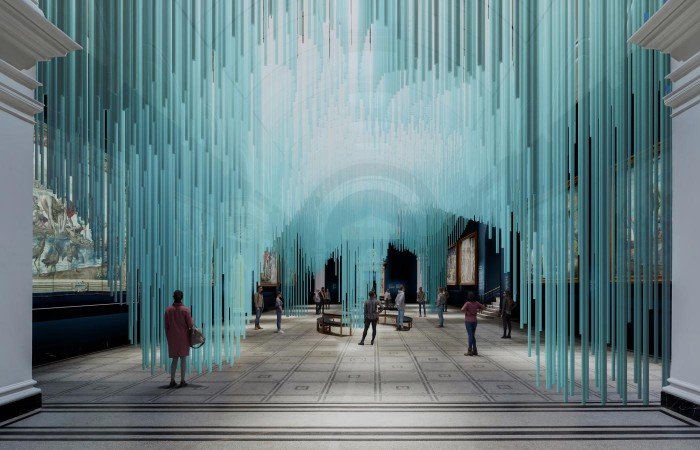 Creating user experiences with augmented reality will soon be as ubiquitous among graphic designers as creating a business card. It's inspiring to see work from other designers doing similar things."Medusa" is an installation created by Tin Drum in collaboration with famed Japanese architect Sou Fujimoto. The installation looks at the relationship between nature and art and evokes a similar experience to augmented reality.The installation is one example of the designers featured in the 19th edition of the London Design Festival. Other work showcases the work of students from the Royal College of Art who were charged with using single-use plastic to create new materials and resulted in a collection of handcrafted items that champion waste as a creative resource.The festival also features vibrant murals and artwork installed in communities throughout London that represent the diversity of people living there and celebrates multiculturalism.Climate change, sustainability, and multiculturalism are moving to the forefront in many conversations. Graphic designers can support these efforts by looking for opportunities where they can help spread the message.
Creating user experiences with augmented reality will soon be as ubiquitous among graphic designers as creating a business card. It's inspiring to see work from other designers doing similar things."Medusa" is an installation created by Tin Drum in collaboration with famed Japanese architect Sou Fujimoto. The installation looks at the relationship between nature and art and evokes a similar experience to augmented reality.The installation is one example of the designers featured in the 19th edition of the London Design Festival. Other work showcases the work of students from the Royal College of Art who were charged with using single-use plastic to create new materials and resulted in a collection of handcrafted items that champion waste as a creative resource.The festival also features vibrant murals and artwork installed in communities throughout London that represent the diversity of people living there and celebrates multiculturalism.Climate change, sustainability, and multiculturalism are moving to the forefront in many conversations. Graphic designers can support these efforts by looking for opportunities where they can help spread the message.
Copyright and the American Way
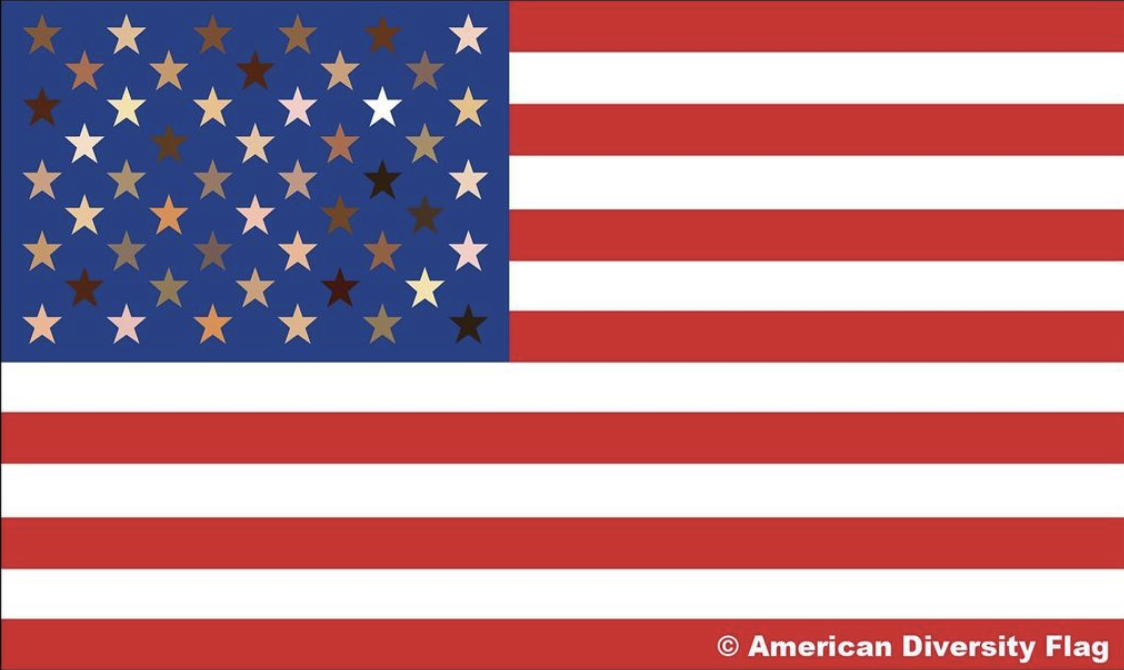 Kate Kretz is an American artist, educator, and activist who has made it her mission to fight white supremacy and authoritarianism since the 2016 election. The MAGA Hat Collection focuses on ripping MAGA hats apart and making objects that function as physical manifestations of their racist truth.One of her most recent projects is the #fixedit American Diversity Flag. Pictured above, the flag aims to correct the all white stars version of the American Flag with stars that represent the melanin scale and the actual skin tones of the American people.Kretz started this project in August 2019 when she ordered an American flag and began ripping out the white machine stitched stars and replacing them with her hand embroidered ones. She published a sketch of her ongoing work on Instagram in February 2020 and filed a U.S. copyright for her concept.In June 2021, the singer Macy Gray wrote an op-ed calling for a new American flag based on melanin skin tones and shared a similar design saying the artist wished to remain anonymous and would not reveal the name. As many copyright infringement cases go, the smaller and less established artist, Kretz, could not afford to pursue the matter legally against the high-power and celebrity status of Macy Gray. Instead, she wrote a lengthy article for Medium, "David, Goliath, and The Futility of Copyright," in which she warns other artists about the limitations of copyright and she created the website.Follow the painstaking creation of “Reparation: Where Our Greatness Lies” on Instagram, and consider supporting this independent artist’s vision of a flag that represents ALL of us, the American Diversity Flag.
Kate Kretz is an American artist, educator, and activist who has made it her mission to fight white supremacy and authoritarianism since the 2016 election. The MAGA Hat Collection focuses on ripping MAGA hats apart and making objects that function as physical manifestations of their racist truth.One of her most recent projects is the #fixedit American Diversity Flag. Pictured above, the flag aims to correct the all white stars version of the American Flag with stars that represent the melanin scale and the actual skin tones of the American people.Kretz started this project in August 2019 when she ordered an American flag and began ripping out the white machine stitched stars and replacing them with her hand embroidered ones. She published a sketch of her ongoing work on Instagram in February 2020 and filed a U.S. copyright for her concept.In June 2021, the singer Macy Gray wrote an op-ed calling for a new American flag based on melanin skin tones and shared a similar design saying the artist wished to remain anonymous and would not reveal the name. As many copyright infringement cases go, the smaller and less established artist, Kretz, could not afford to pursue the matter legally against the high-power and celebrity status of Macy Gray. Instead, she wrote a lengthy article for Medium, "David, Goliath, and The Futility of Copyright," in which she warns other artists about the limitations of copyright and she created the website.Follow the painstaking creation of “Reparation: Where Our Greatness Lies” on Instagram, and consider supporting this independent artist’s vision of a flag that represents ALL of us, the American Diversity Flag.
Sustainable Digital Design
"If the Internet was a country, it would be the 7th largest polluter." Let's face it, ephemera is the mainstay of graphic design. We make a living designing things that are meant to capture the viewer's immediate attention. In the process there's often a bit of excess. In the print world, this can result in litter on the landscape — think of all the post election signs, billboards, flyers, etc. In the digital realm, it takes the form of how much power is being used for data centers, telecom networks, and end user devices.UX and UI designers can work with their clients to set page weight budgets and limit the size on files that are transferred as a web page loads. This includes paying attention to the size of assets and minimizing the number of custom fonts used and limiting the use of video and animation. Designing in dark mode lowers the drain on batteries. Not only will this require less power, it's a win-win as it will create a smoother user experience.Designers can help make a difference and sign up to do so by taking the pledge and signing the Sustainable Web Manifesto.The manifesto calls upon designers to do the following:
Let's face it, ephemera is the mainstay of graphic design. We make a living designing things that are meant to capture the viewer's immediate attention. In the process there's often a bit of excess. In the print world, this can result in litter on the landscape — think of all the post election signs, billboards, flyers, etc. In the digital realm, it takes the form of how much power is being used for data centers, telecom networks, and end user devices.UX and UI designers can work with their clients to set page weight budgets and limit the size on files that are transferred as a web page loads. This includes paying attention to the size of assets and minimizing the number of custom fonts used and limiting the use of video and animation. Designing in dark mode lowers the drain on batteries. Not only will this require less power, it's a win-win as it will create a smoother user experience.Designers can help make a difference and sign up to do so by taking the pledge and signing the Sustainable Web Manifesto.The manifesto calls upon designers to do the following:
- use services that are powered by renewable energy and use the least amount of energy and material resources as possible.
- use products and services that are accessible and allow for the open exchange of information and allow users to control their data.
- avoid dark patterns when designing
- design products and services that are regenerative and resilient
Designers need to respond to the needs of their clients, however, they can do it responsibly and educate them on the benefits of designing sustainably in the process.https://uxdesign.cc/essentials-for-designing-sustainable-digital-experiences-85563fab928https://www.wired.co.uk/article/netflix-carbon-footprint
Dark patterns, the dark side of design
The term “dark patterns” was coined in 2010 by UX specialist Harry Brignull, describing online experiences that are intentionally designed to trick users into unintended actions. These actions rarely benefit the user, but do benefit the owner of the site or app, and usually for financial gain. The presence of these patterns makes the current digital landscape one of “user beware.” In this context, even UX designers with the best of intentions can find themselves designing for the dark side — unless they actively take steps to avoid it. If you’re like me, you’ve probably experienced dark patterns in your daily life. Here are some at the most common: Bait and Switch: Takes advantage of familiar actions and behaviors to substitute a new action, typically with some kind of in. This can create confusion or knee-jerk reactions, as when Microsoft’s upgrade to Windows 10 was initiated by clicking on an “X” — how you would normally close a window, not initiate an installation. Disguised Ads: Ads are usually located in specific places on a web page and include graphics and copy that clearly promote a product or service. However, sometimes they are designed to look like action buttons for obtaining content. It’s up to the user to fully read the instructions and ignore misleading graphics. Sites like Dafont.com, that graphic designers use to access free fonts, are a prime example. Roach Motel: Occurs when it becomes almost impossible to delete an account or unsubscribe from a mailing list. A prime example of this was when online donors for Trump weren’t aware that they were making weekly contributions to keep his struggling campaign afloat. One donor who lived on an income of less than $1,000 per month found out what they thought was a one-time donation of $500 had turned into $3,000 in less than 30 days. Friend Spam: Occurs when a product asks for social media permissions under false pretenses and then spams your friend list. LinkedIn was fined $13 million dollars for this as part of a class-action suit in 2015. Forced Continuity: Websites that offer free trials force users to submit a credit card to continue using a site for “free.”Failure to cancel within the allotted time frame leads to automated billing. On top of this, cancelling the subscription can be extremely difficult, akin to finding a needle in a haystack. Affinion Group is an international loyalty program manager that has paid millions of dollars in claims for unfair and deceptive trade practices. They face multiple class-action suits for misleading consumers using dark patterns. These are just some of the “dark patterns” that have been identified — and more are being concocted every minute, which is hardly surprising given what a lucrative practice it can be. Users must educate themselves to successfully detect and avoid dark patterns. However, the onus shouldn’t just be on users — what is the role of the designer in dark patterns? Many believe ethics for graphic designers should be based on the idea of service, and that helping other people is a good thing to do. With knowledge and access to tools that can direct people’s attention and actions, we have a moral responsibility to avoid using dark patterns for ourselves or clients. If we look specifically at the role of a UX/UI designer, the most basic user experiences are designed to help and direct. Experiences should be positive, easy, and intuitive. Like a carpenter building a set of stairs, the designer should build an experience that is supportive and safe. Dark patterns introduce a moral hazard to this mission, akin to building a set of stairs with booby traps that send users in a variety of confusing or pointless directions. A carpenter would surely be held accountable, as would the general contractor and architect; yet in the online environment we all currently inhabit, there is little accountability. Who should be held accountable? Should it be the individual UX/UI designer, or their employer? Top level management may not know the specifics of the dark patterns used to make an app or website more profitable. However, they are aware of the revenue being generated and prefer to turn a blind eye to the dark side of how it happens. For users, there is a variety of private and public information on how to spot and avoid dark patterns. Cyber security and IT departments have created consumer awareness programs and professional development classes — these are increasingly made mandatory by employers. A non-profit organization, darkpatterns.org, features a “Hall of Fame” where they call out offenders. However, until there are legal and financial repercussions along with public shaming, change will be slow in coming. There is reason to believe that more systematic prevention and punishment is on the way. California recently passed legislation banning dark patterns that trick users into giving away their personal data. The updated legislation is intended to strengthen the 2018 California Consumer Privacy Act (CCPA), which gives Californians the right to say no to the sale of their personal information. Legislators are concerned that this option can be buried with dark patterns. By banning them, California is striving to make sure consumers will not be confused or misled when exercising their right to privacy in online experiences. Unfortunately, the new regulation only bans dark patterns connected to the consumer’s “opt-out” choice, but at least it’s a start. In Europe, CNIL (Commission Nationale de l’Informatique et des Libertés) emphasized in their report, Shaping Choices in the Digital World, how dangerous manipulative and misleading interface design is and how it jeopardizes our rights and freedoms. Their report is a call to arms for the regulation of design, and a reminder of the need for informed and unambiguous consent. Designers should adhere to a code of ethical conduct where transparency and respect for privacy are first and foremost. Next, they can educate themselves about dark patterns and examine their role in creating them by seeking out research on the topic and attending workshops. They can look for alternative solutions to offer their clients and impress upon them the advantages of building trust with users, rather than taking advantage. They should look at best practices created by apps like Duolingo, that allow users to sign up through their Google or Facebook accounts and quickly give them access to lessons; this stands in contrast to Rosetta Stone, who’s registration process requires several steps and payment information for a trial account. Creating a customer-centric culture will build long-lasting relationships and engender trust. Over time, this will prove much more valuable than the short-term gains that result from dark patterns. While users can stem the tide, designers have a greater influence over the future of dark patterns, and whether or not the dark side will win.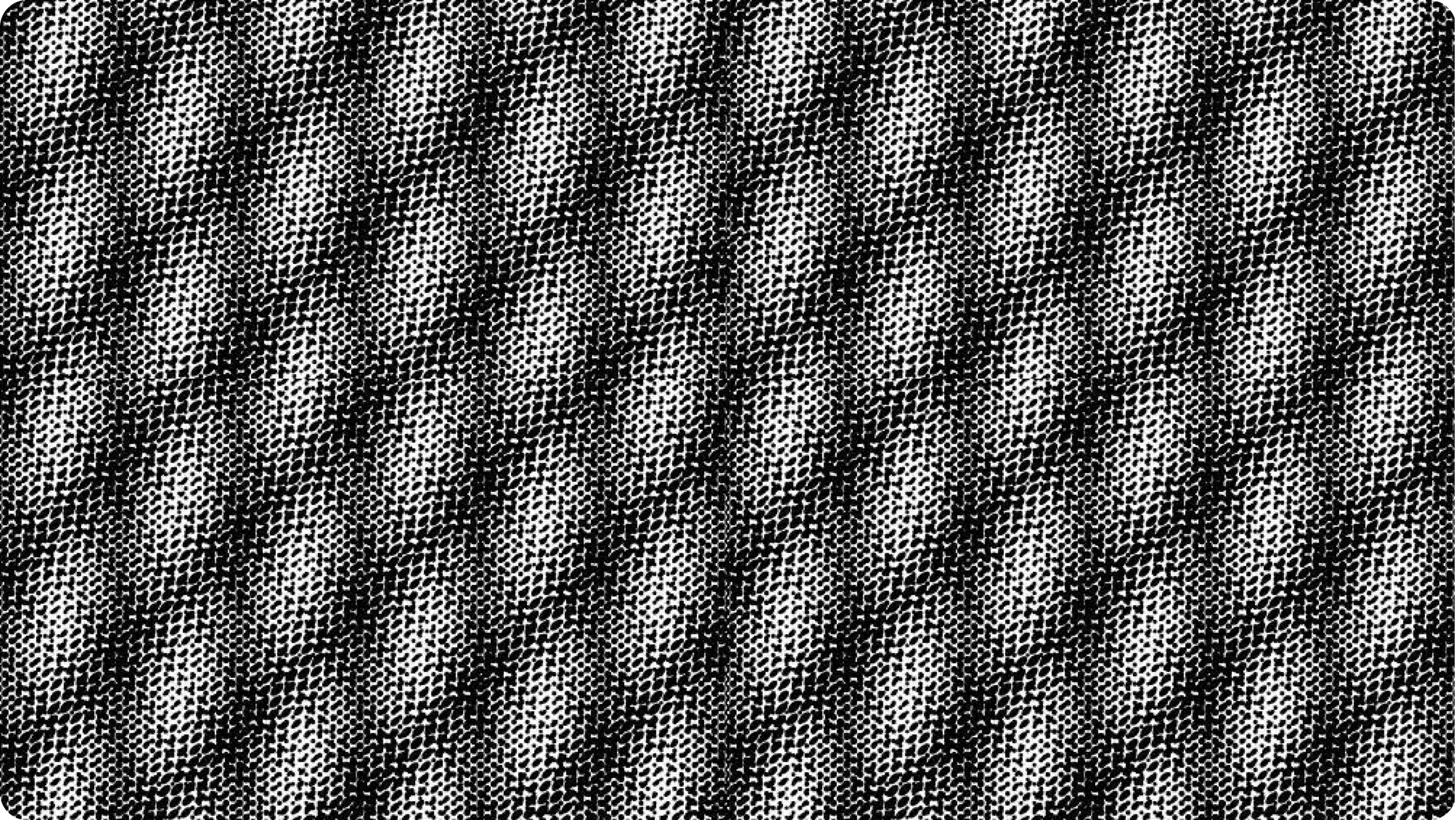 This article was written for Readymag, The Ethical Issue 5/5Dark patterns are online user experiences that are intentionally designed to trick users into taking unintended actions. These actions rarely benefit the user, but rather serve the owner of the site or app — almost always for financial gain. This article by graphic designer, artist and art educator Eileen MacAvery Kane will explore different types of experiences, the role and responsibility of designers, the confusing online landscape created by dark patterns, and what actions can be taken to prioritize users in the online design process.
This article was written for Readymag, The Ethical Issue 5/5Dark patterns are online user experiences that are intentionally designed to trick users into taking unintended actions. These actions rarely benefit the user, but rather serve the owner of the site or app — almost always for financial gain. This article by graphic designer, artist and art educator Eileen MacAvery Kane will explore different types of experiences, the role and responsibility of designers, the confusing online landscape created by dark patterns, and what actions can be taken to prioritize users in the online design process.
Photoshop and Body Shaming
 I'm a huge Margaret Atwood fan and read the Handmaid's Tale, a science fiction novel about a dystopian totalitarian society, years ago. I've been a fan of the Hulu series too. I recently watched the documentary about Atwood, "Margaret Atwood: A Word after a Word after a Word is Power," and was fascinated when she talked about how much of the material for her 1985 novel was based on true events. With that in mind, it's not a huge leap to imagine the recent New York Times story about altered yearbook photos at Bartram Trail High School in St. Johns County, Fla as more real-life material.In the photo above, someone with Photoshop (or a similar image editing program) added a black bar to the young woman's chest to block her cleavage. There are multiple examples in the yearbook where this was done—without the permission or knowledge of the students. They only found out when they opened the yearbook. Edits were only done on images of female students, no male student photos were edited. Students said their first reaction was fury, then they felt sexualized and exposed.Image manipulation is ubiquitous these days. Most of us assume retouching is used for advertising along with a plethora of other uses. Its use for body shaming is not surprising, but definitely alarming, and perhaps we should view it as a huge red flag.Sources:https://www.nytimes.com/2021/05/23/us/yearbook-photos-st-johns-girls-altering.html?referringSource=articleSharehttps://www.insider.com/handmaids-tale-based-on-real-world-origins-history-events-2019-8#:~:text=%22The%20Handmaid's%20Tale%22%20may%20be,in%20religious%20and%20political%20history.&text=Its%20real%2Dlife%20origins%20are,30%20years%20after%20its%20publication.
I'm a huge Margaret Atwood fan and read the Handmaid's Tale, a science fiction novel about a dystopian totalitarian society, years ago. I've been a fan of the Hulu series too. I recently watched the documentary about Atwood, "Margaret Atwood: A Word after a Word after a Word is Power," and was fascinated when she talked about how much of the material for her 1985 novel was based on true events. With that in mind, it's not a huge leap to imagine the recent New York Times story about altered yearbook photos at Bartram Trail High School in St. Johns County, Fla as more real-life material.In the photo above, someone with Photoshop (or a similar image editing program) added a black bar to the young woman's chest to block her cleavage. There are multiple examples in the yearbook where this was done—without the permission or knowledge of the students. They only found out when they opened the yearbook. Edits were only done on images of female students, no male student photos were edited. Students said their first reaction was fury, then they felt sexualized and exposed.Image manipulation is ubiquitous these days. Most of us assume retouching is used for advertising along with a plethora of other uses. Its use for body shaming is not surprising, but definitely alarming, and perhaps we should view it as a huge red flag.Sources:https://www.nytimes.com/2021/05/23/us/yearbook-photos-st-johns-girls-altering.html?referringSource=articleSharehttps://www.insider.com/handmaids-tale-based-on-real-world-origins-history-events-2019-8#:~:text=%22The%20Handmaid's%20Tale%22%20may%20be,in%20religious%20and%20political%20history.&text=Its%20real%2Dlife%20origins%20are,30%20years%20after%20its%20publication.
The Power of Advertising
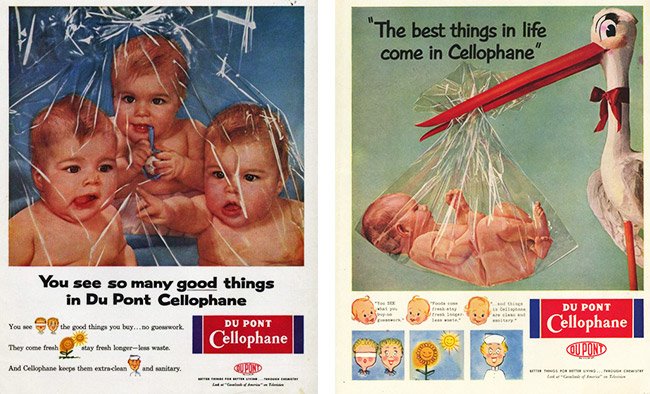 When times get tough, advertising is often the first budget to be cut. However, a quick look at history offers a different point of view and how powerful it can be.After World War II advertising played a huge role in establishing single use plastic. Advertising from this era convinced people how inconvenient returning glass was all while manufacturers of plastic worked hard to make it thinner and more fragile, establishing our firm and unshakable relationship with the disposable. As Odile Madden, a conservation scientist at the Getty Conservation Institute states, “We were trained to buy this stuff, these identical, multiple objects that are meant to be used for a short period of time and then replaced with an identical one ― and that took cultural training."Looking further into this topic reveals more contributors to the cycle. The anti-littering campaigns that followed were started by a consortium of industry groups who wanted to divert people's attention away from legislation to control industrial polluters, much bigger culprits than American consumers. The "Keep America Beautiful" campaign shifted the focus away from production on a grand scale, to consumers, who were a much smaller part of the problem.In recent years, the United Nations has put forth 17 Sustainable Development Goals. #14 is "Life Below Water" with the mission of conserving and sustainably using the oceans, seas, and marine resources for sustainable development. One of the positive implications of COVID-19 has been the drastic reduction in human activity, providing a chance for our oceans to recuperate.Graphic designers working in advertising may not be as powerful as the industries they work for, however, they should be aware of the role they play and question what they are being asked to do. The messages they create can pack a powerful punch, both for and against our environment. June 8 has been designated World Oceans Day. Let's create messages that celebrate our oceans and call for their preservation and use advertising to help heal our planet, rather than destroy it.Sources:https://sdgs.un.org/goalshttps://www.marketingsociety.com/the-clubroom/rethinking-role-plastic-and-marketinghttps://www.motherjones.com/politics/2006/05/origins-anti-litter-campaigns/https://www.plasticpollutioncoalition.org/blog/2017/10/26/a-beautiful-if-evil-strategyhttps://www.collectorsweekly.com/articles/the-top-10-most-dangerous-ads/http://www.technomarketinginc.com/marketing-budgets-cut/https://www.huffpost.com/entry/vintage-ads-plastic_n_5cdb1768e4b01e9bd3540ffa
When times get tough, advertising is often the first budget to be cut. However, a quick look at history offers a different point of view and how powerful it can be.After World War II advertising played a huge role in establishing single use plastic. Advertising from this era convinced people how inconvenient returning glass was all while manufacturers of plastic worked hard to make it thinner and more fragile, establishing our firm and unshakable relationship with the disposable. As Odile Madden, a conservation scientist at the Getty Conservation Institute states, “We were trained to buy this stuff, these identical, multiple objects that are meant to be used for a short period of time and then replaced with an identical one ― and that took cultural training."Looking further into this topic reveals more contributors to the cycle. The anti-littering campaigns that followed were started by a consortium of industry groups who wanted to divert people's attention away from legislation to control industrial polluters, much bigger culprits than American consumers. The "Keep America Beautiful" campaign shifted the focus away from production on a grand scale, to consumers, who were a much smaller part of the problem.In recent years, the United Nations has put forth 17 Sustainable Development Goals. #14 is "Life Below Water" with the mission of conserving and sustainably using the oceans, seas, and marine resources for sustainable development. One of the positive implications of COVID-19 has been the drastic reduction in human activity, providing a chance for our oceans to recuperate.Graphic designers working in advertising may not be as powerful as the industries they work for, however, they should be aware of the role they play and question what they are being asked to do. The messages they create can pack a powerful punch, both for and against our environment. June 8 has been designated World Oceans Day. Let's create messages that celebrate our oceans and call for their preservation and use advertising to help heal our planet, rather than destroy it.Sources:https://sdgs.un.org/goalshttps://www.marketingsociety.com/the-clubroom/rethinking-role-plastic-and-marketinghttps://www.motherjones.com/politics/2006/05/origins-anti-litter-campaigns/https://www.plasticpollutioncoalition.org/blog/2017/10/26/a-beautiful-if-evil-strategyhttps://www.collectorsweekly.com/articles/the-top-10-most-dangerous-ads/http://www.technomarketinginc.com/marketing-budgets-cut/https://www.huffpost.com/entry/vintage-ads-plastic_n_5cdb1768e4b01e9bd3540ffa
Educating for Women's Empowerment
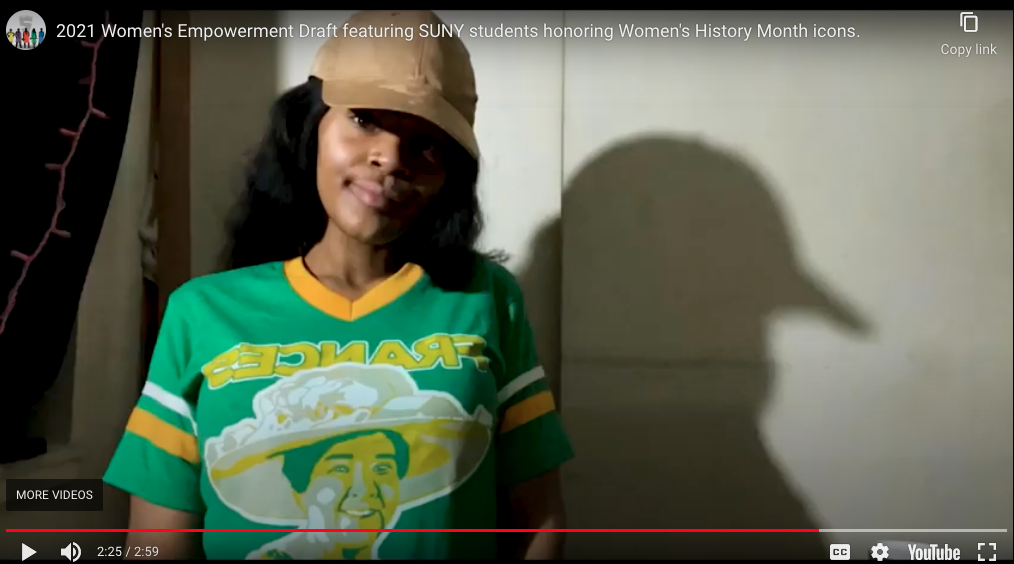 Educators in art and design have a level of visibility with their students that inherently comes with a high level of responsibility. Many of them rose to the occasion this year creating platforms and opportunities for students to come together to learn about amazing women, honor them, and participate in these events.Coordinated by Dan Napolitano from Alfred University's Art Force 5, the 2021 Women's Empowerment Draft featured above is a SUNY-wide (State University of New York) collaboration featuring 32 college students honoring historic and living legends. The collaboration features students from Rockland Community College paying tribute to Dr. Frances E. Pratt, a RCC alumna and an incredible living legend and education advocate from Nyack, NY who served as president of the Nyack branch of the National Association for the Advancement of Colored People (NAACP) for 40 years.An online art exhibit, "Spectrum," features work from Rockland Community College students and alumni on expanding definitions of womanhood.Educators and Practitioners, please let us know how you were involved in this year's celebration of women and please share the wonderful tributes you've seen.Additional Notes:You can view Dr. Frances E. Pratt's full tribute from Rockland Community College here: https://youtu.be/qKkZMf_Jr2s
Educators in art and design have a level of visibility with their students that inherently comes with a high level of responsibility. Many of them rose to the occasion this year creating platforms and opportunities for students to come together to learn about amazing women, honor them, and participate in these events.Coordinated by Dan Napolitano from Alfred University's Art Force 5, the 2021 Women's Empowerment Draft featured above is a SUNY-wide (State University of New York) collaboration featuring 32 college students honoring historic and living legends. The collaboration features students from Rockland Community College paying tribute to Dr. Frances E. Pratt, a RCC alumna and an incredible living legend and education advocate from Nyack, NY who served as president of the Nyack branch of the National Association for the Advancement of Colored People (NAACP) for 40 years.An online art exhibit, "Spectrum," features work from Rockland Community College students and alumni on expanding definitions of womanhood.Educators and Practitioners, please let us know how you were involved in this year's celebration of women and please share the wonderful tributes you've seen.Additional Notes:You can view Dr. Frances E. Pratt's full tribute from Rockland Community College here: https://youtu.be/qKkZMf_Jr2s
Where are the Black Graphic Designers?
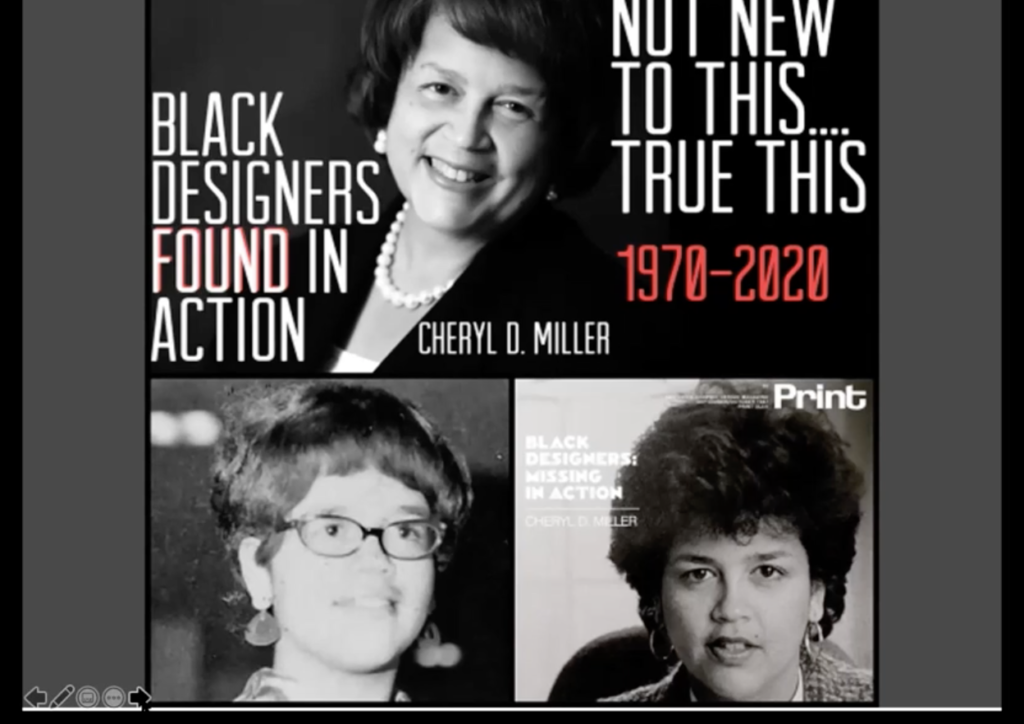 Cheryl D. Holmes Miller has been on a journey answering the question "Where are the Black Graphic Designers?" for the past 50 years. In 1987 she published her seminal PRINT article “Black Designers: Missing in Action.” In 2016 she wrote a follow-up and in 2020 she wrote a four-part volume, exploring the topic from many angles including education, design organizations, and the historic roots of the black graphic designer.Cheryl is both fearless and optimistic, enjoy and learn from her presentation to a group of graphic design students this month: https://vimeo.com/510027004You can find her articles here:https://www.printmag.com/post/from-black-designers-missing-in-action-to-forward-in-action-3-essential-industry-articles
Cheryl D. Holmes Miller has been on a journey answering the question "Where are the Black Graphic Designers?" for the past 50 years. In 1987 she published her seminal PRINT article “Black Designers: Missing in Action.” In 2016 she wrote a follow-up and in 2020 she wrote a four-part volume, exploring the topic from many angles including education, design organizations, and the historic roots of the black graphic designer.Cheryl is both fearless and optimistic, enjoy and learn from her presentation to a group of graphic design students this month: https://vimeo.com/510027004You can find her articles here:https://www.printmag.com/post/from-black-designers-missing-in-action-to-forward-in-action-3-essential-industry-articles
The Controversial Kamala Cover
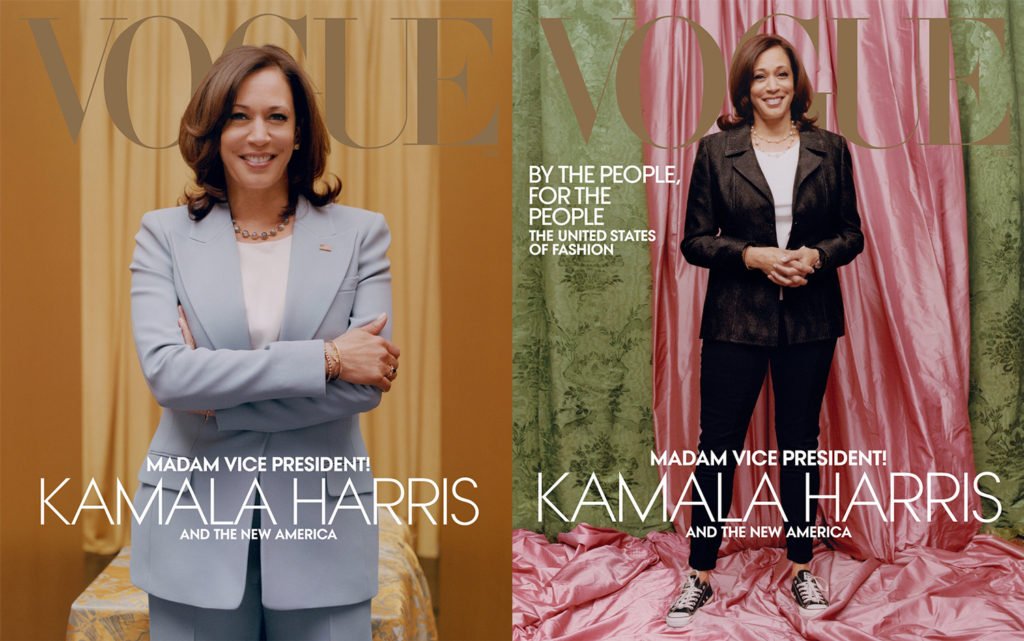 The February Vogue covers of Vice President Kamala Harris have stirred up a heated debate on social media. While many debate which cover is more appropriate, the issue also raises the question of, "what is the responsibility of a publication to their subject?"Both covers were shot with the collaboration of Vice President-elect Harris, who chose and wore her own clothes, however, the Vice President's team has said they felt blindsided; the cover on the left in the blue suit is the one that they mutually agreed upon. Contractually, Vogue had the final choice. Harris' team feels they acted in bad faith.Vogue has said their choice speaks to the approachable nature of the Biden-Harris team and that the more informal image represents this. Editor-in-chief Anna Wintour has defended the choice and has gone on the record saying that their intention was not to diminish the importance of Harris' victory. Vogue responded to the controversy by releasing the more formal image as the digital cover.Critics feel the print cover image is disrespectful and does not represent her game-changing position, as the first female vice president, the first Black female vice president and the first female vice president of South Asian descent. Vogue has also been accused of lightening her skin tone.While Vogue makes a point with their argument and legally it looks like they are covered, the question remains, did they act responsibly toward their subject? They were given an opportunity to convey the essence of this pivotal moment in history, perhaps they should have done so with no explanation needed.Sources:https://www.nytimes.com/2021/01/11/style/kamala-harris-vogue.html?auth=login-email&login=emailhttps://www.nytimes.com/2021/01/12/opinion/sway-kara-swisher-anna-wintour.htmlhttps://www.today.com/style/anna-wintour-speaks-out-kamala-harris-vogue-cover-t205582https://www.dnaindia.com/world/report-us-vice-president-elect-social-media-outraged-over-lightening-of-kamala-harris-skin-tone-on-magazine-cover-2867608
The February Vogue covers of Vice President Kamala Harris have stirred up a heated debate on social media. While many debate which cover is more appropriate, the issue also raises the question of, "what is the responsibility of a publication to their subject?"Both covers were shot with the collaboration of Vice President-elect Harris, who chose and wore her own clothes, however, the Vice President's team has said they felt blindsided; the cover on the left in the blue suit is the one that they mutually agreed upon. Contractually, Vogue had the final choice. Harris' team feels they acted in bad faith.Vogue has said their choice speaks to the approachable nature of the Biden-Harris team and that the more informal image represents this. Editor-in-chief Anna Wintour has defended the choice and has gone on the record saying that their intention was not to diminish the importance of Harris' victory. Vogue responded to the controversy by releasing the more formal image as the digital cover.Critics feel the print cover image is disrespectful and does not represent her game-changing position, as the first female vice president, the first Black female vice president and the first female vice president of South Asian descent. Vogue has also been accused of lightening her skin tone.While Vogue makes a point with their argument and legally it looks like they are covered, the question remains, did they act responsibly toward their subject? They were given an opportunity to convey the essence of this pivotal moment in history, perhaps they should have done so with no explanation needed.Sources:https://www.nytimes.com/2021/01/11/style/kamala-harris-vogue.html?auth=login-email&login=emailhttps://www.nytimes.com/2021/01/12/opinion/sway-kara-swisher-anna-wintour.htmlhttps://www.today.com/style/anna-wintour-speaks-out-kamala-harris-vogue-cover-t205582https://www.dnaindia.com/world/report-us-vice-president-elect-social-media-outraged-over-lightening-of-kamala-harris-skin-tone-on-magazine-cover-2867608
The Ad Council gets their moonshot moment
The Ad Council has a 78 year history of partnering with the best advertising minds in the country to create marketing for complex social issues. They have already been working on what some think will be their biggest one yet, their "moonshot moment." They have launched a series of national PSAs and multi-channel content to provide critical and urgent messages to the American public. The campaign site features a Coronavirus Response Toolkit with access to materials to support and help spread the word about three key issues: Mask Up, Mental Health, and Social Distancing.Like campaigns in the past that enlisted the help of celebrities like Elvis Presley to spread the message about the safety of getting the Polio vaccine, they have enlisted the help of contemporary celebrities and influencers to launch on a variety of digital platforms like the twitter campaign seen below.https://twitter.com/AdCouncil/status/1320791468353691655?s=20 They are also well aware of the Black men and women who are being disproportionately affected by the pandemic who are three times more likely to contract the virus, and five times more likely to land in the hospital. They have launched a campaign called "The Power of Us" to specifically illustrate COVID-19 safety guideline to Black Americans.In January, they will be launching a $50 Million campaign to educate the public on the new vaccine, the largest public initiative in its history. They have the help of infectious disease and public health experts from John Hopkins University, Duke University and more.They have a tough challenge ahead of them with a survey done by COVID Collaborative indicating that only one-third of Americans plan to get vaccinated. The Ad Council's goal is to reverse this trend with unified and consistent messaging. In a world with a multitude of media platforms and channels, it will indeed be their moonshot moment.Sources:https://www.adcouncil.org/campaign/coronavirus-preventionhttps://www.goodhousekeeping.com/health/a34937387/ad-council-coronavirus-vaccine-campaign/https://www.npr.org/sections/coronavirus-live-updates/2020/12/04/943151549/and-now-for-an-important-message-convincing-you-to-get-the-coronavirus-vaccinehttps://www.nytimes.com/2020/11/23/business/media/ad-council-covid-vaccine-skeptics.html
They have launched a series of national PSAs and multi-channel content to provide critical and urgent messages to the American public. The campaign site features a Coronavirus Response Toolkit with access to materials to support and help spread the word about three key issues: Mask Up, Mental Health, and Social Distancing.Like campaigns in the past that enlisted the help of celebrities like Elvis Presley to spread the message about the safety of getting the Polio vaccine, they have enlisted the help of contemporary celebrities and influencers to launch on a variety of digital platforms like the twitter campaign seen below.https://twitter.com/AdCouncil/status/1320791468353691655?s=20 They are also well aware of the Black men and women who are being disproportionately affected by the pandemic who are three times more likely to contract the virus, and five times more likely to land in the hospital. They have launched a campaign called "The Power of Us" to specifically illustrate COVID-19 safety guideline to Black Americans.In January, they will be launching a $50 Million campaign to educate the public on the new vaccine, the largest public initiative in its history. They have the help of infectious disease and public health experts from John Hopkins University, Duke University and more.They have a tough challenge ahead of them with a survey done by COVID Collaborative indicating that only one-third of Americans plan to get vaccinated. The Ad Council's goal is to reverse this trend with unified and consistent messaging. In a world with a multitude of media platforms and channels, it will indeed be their moonshot moment.Sources:https://www.adcouncil.org/campaign/coronavirus-preventionhttps://www.goodhousekeeping.com/health/a34937387/ad-council-coronavirus-vaccine-campaign/https://www.npr.org/sections/coronavirus-live-updates/2020/12/04/943151549/and-now-for-an-important-message-convincing-you-to-get-the-coronavirus-vaccinehttps://www.nytimes.com/2020/11/23/business/media/ad-council-covid-vaccine-skeptics.html
Cradlr: Helping Refugee Children with App Design
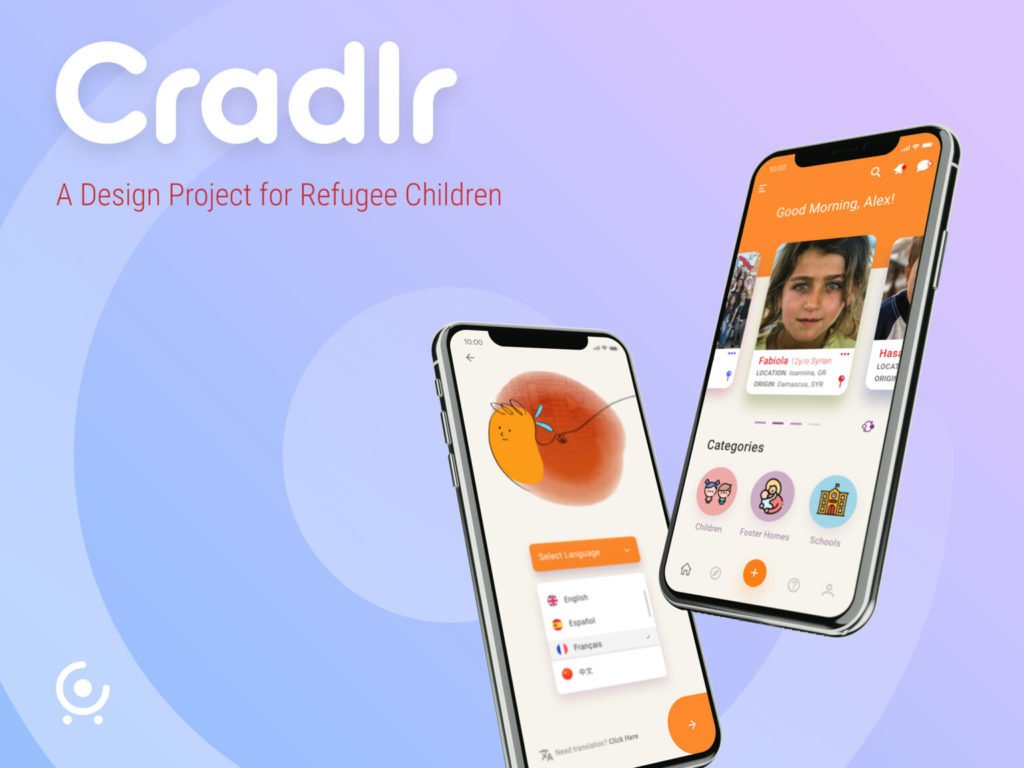 Designer Jiang Jian was chosen by Design Incubation as the 2020 Creative Works Award Winner for her UX/UI Design Project, Cradlr, that aims to create a global network to help displaced children all over the world.Wars, political persecution, famines, pandemics, natural disasters, and more have displaced nearly 80 million people, 26 million of them are registered refugees and half of them are under age of 18, and most without access to cell phones or other communication devices. The Cradlr Network is a place where temporary guardians, international and regional organizations, as well as volunteers, can collect these children's stories and data and store in a database which will become a collective digital memory, as well as a resource to connect lives on a global scale to rescue and nurture refugee children. With her design, Jiang Jian hopes to find a humanitarian solution for a complex social challenge.Learn more here:Cradlr: A Design Project for Refugee Children from Jing Zhou Studio on Vimeo.
Designer Jiang Jian was chosen by Design Incubation as the 2020 Creative Works Award Winner for her UX/UI Design Project, Cradlr, that aims to create a global network to help displaced children all over the world.Wars, political persecution, famines, pandemics, natural disasters, and more have displaced nearly 80 million people, 26 million of them are registered refugees and half of them are under age of 18, and most without access to cell phones or other communication devices. The Cradlr Network is a place where temporary guardians, international and regional organizations, as well as volunteers, can collect these children's stories and data and store in a database which will become a collective digital memory, as well as a resource to connect lives on a global scale to rescue and nurture refugee children. With her design, Jiang Jian hopes to find a humanitarian solution for a complex social challenge.Learn more here:Cradlr: A Design Project for Refugee Children from Jing Zhou Studio on Vimeo.
Vote for Science!
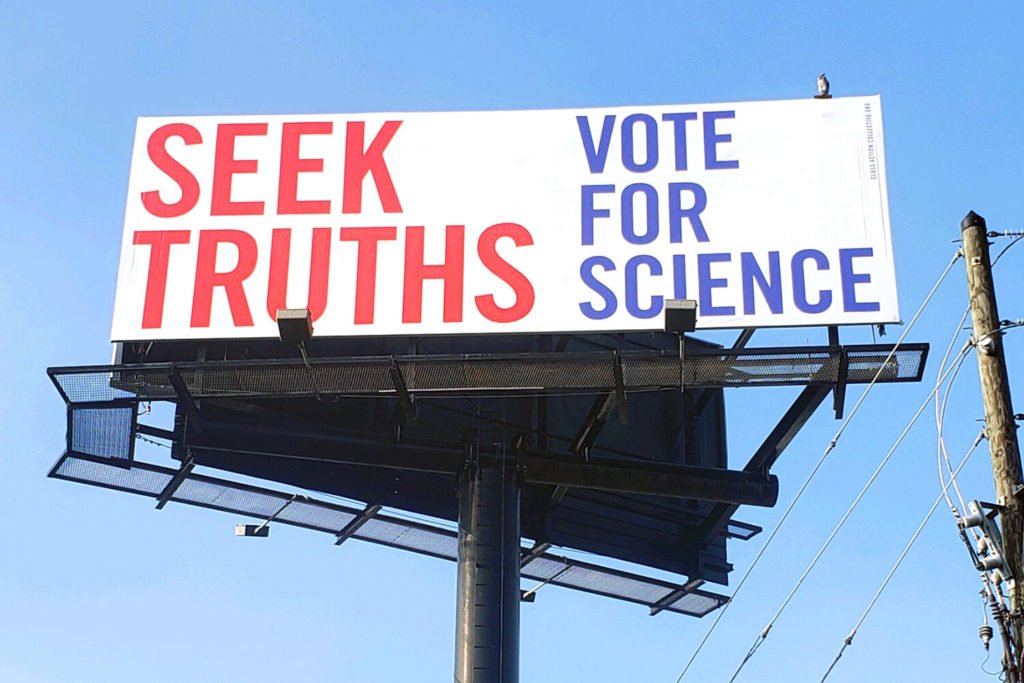 Class Action Collective creates visual messages to advocate for social change. Formed in 1992 at the Yale School of Art, the group aims to increase awareness and motivate citizens to take action on important social issues.Their recent initiative, Vote for Science 2020, is aimed at three key swing states: Arizona, Florida, and Virginia and the billboard campaign contrasts bible verses with a call to support science when voting and assert that the two can co-exist in a free society.The group created four different monumental typographic messages in red, white, and blue which will cycle through and spread the message in Phoenix, AZ, Orlando, FL, Richmond, VA, and West Haven, CT through election day.View more on Instagram, follow the project and help spread the word!Sources:https://www.classactioncollective.org/vote-for-science-2020https://www.printmag.com/post/the-daily-heller-science-is-nonpartisan-knowledge-is-universal-vote?fbclid=IwAR0kjWMCQ0d4MQgnOIDlFxQeaeLt0pQXpbOcC84r019QBUDJZR3nxHM3WeA
Class Action Collective creates visual messages to advocate for social change. Formed in 1992 at the Yale School of Art, the group aims to increase awareness and motivate citizens to take action on important social issues.Their recent initiative, Vote for Science 2020, is aimed at three key swing states: Arizona, Florida, and Virginia and the billboard campaign contrasts bible verses with a call to support science when voting and assert that the two can co-exist in a free society.The group created four different monumental typographic messages in red, white, and blue which will cycle through and spread the message in Phoenix, AZ, Orlando, FL, Richmond, VA, and West Haven, CT through election day.View more on Instagram, follow the project and help spread the word!Sources:https://www.classactioncollective.org/vote-for-science-2020https://www.printmag.com/post/the-daily-heller-science-is-nonpartisan-knowledge-is-universal-vote?fbclid=IwAR0kjWMCQ0d4MQgnOIDlFxQeaeLt0pQXpbOcC84r019QBUDJZR3nxHM3WeA
Get the Vote Out!
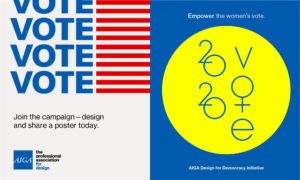 2020 is a year filled with unprecedented events – the Pandemic, Black Lives Matter Protests, Wildfires, and more. AIGA (American Institute of Graphic Artists) is one organization working toward getting the vote out to make sure we save our democracy. With their "Get Out the Vote" campaign, AIGA is encouraging members to create posters and submit for both "Get Out the Vote 2020" and "Get Out the Vote: Empowering the Women's Vote." Both submission checklists require posters are nonpartisan to comply with nonprofit guidelines.While submission requires AIGA membership, viewing the gallery of posters does not and visitors are encouraged to share the posters widely with full credit to the designer.If you are a US citizen, take a look at the gallery of posters for sharing. If you are an AIGA member, look into designing a poster yourself—and above all else, Get the Vote Out!
2020 is a year filled with unprecedented events – the Pandemic, Black Lives Matter Protests, Wildfires, and more. AIGA (American Institute of Graphic Artists) is one organization working toward getting the vote out to make sure we save our democracy. With their "Get Out the Vote" campaign, AIGA is encouraging members to create posters and submit for both "Get Out the Vote 2020" and "Get Out the Vote: Empowering the Women's Vote." Both submission checklists require posters are nonpartisan to comply with nonprofit guidelines.While submission requires AIGA membership, viewing the gallery of posters does not and visitors are encouraged to share the posters widely with full credit to the designer.If you are a US citizen, take a look at the gallery of posters for sharing. If you are an AIGA member, look into designing a poster yourself—and above all else, Get the Vote Out!